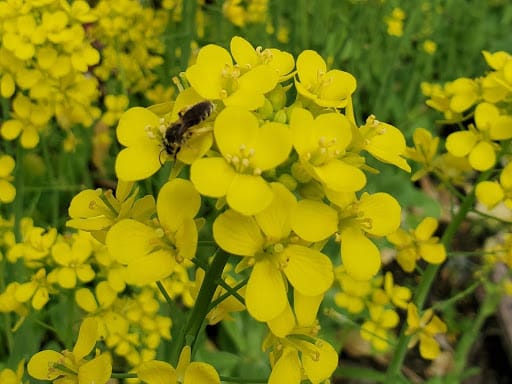
by Linda Halley | After what seems like a lifetime growing vegetables, I am keenly aware that I am just a novice orchardist. We planted nearly 400 saplings, mostly heritage apples, on a four-acre hillside my first year managing Gwenyn Hill. They haven’t bloomed yet, but I assume they have been very busy growing roots and leaves the past few springs. However, there is an old “homestead” apple tree struggling to get my attention in the side yard of the farmhouse at Gwenyn Hill Organic Gardens. No doubt, it was once lovingly tended. It now shows so many years of neglect that I was tempted to cut it down during the renovation of the farmstead. However, a living thing, one so determined to take a stand, and produce fruit, to boot, deserved my pity. I trimmed out the dead wood and collected what apples the deer didn’t eat, and the worms didn’t infest.
For the past two years it barely crossed my mind. After all, the kind of attention it takes to grow a respectable crop of apples from just one tree is nearly equal to the kind of attention it takes to manage a whole orchard of trees. Pheromone lures, sticky traps, and safety garments (we all now know what PPE means) even if you only spray organically allowed pesticides, in addition to the scouting time invested to know when to properly use those tools, lead me to settle for whatever apples nature willingly provided with minimal effort. But, this spring I have made a commitment to be, not just a farmer, but a citizen scientist. Last year I took the pollinator identification training class held here in our Williams Barn and proudly counted bees in the garden. Unfortunately, by the time I was trained and the mobile app (WiBee) that allows me to record my data was up and running, it was late fall and blossoms were hard to find. So, when the first newsletter from the WiBee team hit my inbox in April I began to wait anxiously for the first blooms. Strawberries wouldn’t bloom until early June but surely apple blossoms would be out in May.

I kept my eye on the little tree, worried that it had tiny leaves but no visible buds. I worried that it was taking a break. I had heard that some old-fashioned varieties can revert to producing only every other year. But this past week I was rewarded with a tree full of white blossoms. I was reminded that for all I knew about vegetables there was a mountain of knowledge yet to learn about tree fruit.
This past weekend, in honor of a quiet Sunday to myself, I headed out to the apple tree, opening up the WiBee app on the way. Wow, the app had a new look. It seemed more user-friendly until I realized that it was first going to require a “TEST” of my pollinator knowledge. I tried to skip over it, to no avail. In good nature, I relented. The test was fun until I got one wrong, then another. With a final score of 6 out of 10 it kindly announced that I would need to study a bit more before I could collect accurate data. Humbled by the WiBee!
The good news is that there are training resources right on the app and it was fun and easy to get myself up to speed. Now I can do my part to contribute to science.
You can, too. The app is downloadable, for free, onto your smart phone or tablet. The best way to find out more is to head over to the University of Wisconsin pollinator website or read Gwenyn Hill Farm’s journal entry from January, 2020. I hope you enjoy your summer as a citizen scientist.
Linda Halley is General Manager at Gwenyn Hill Farm.
